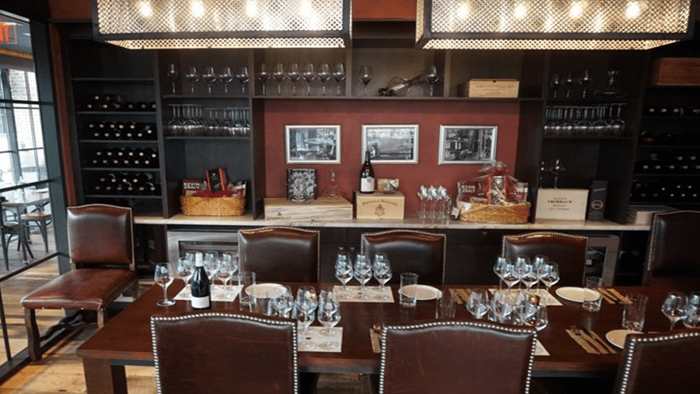
In recent years, the 해외 밤알바 topic of women’s safety when working late at night has emerged as one that has generated a great deal of discussion and controversy. Concerns concerning women’s safety during the nighttime hours have come to the fore in recent years as the number of working women has increased, notably in sectors such as the hotel industry, the healthcare industry, and the transportation industry. While there are many who believe that women should have equal rights to work at any hour without fear of retaliation or limitations, there are others who raise valid concerns about the increased risk of sexual harassment, physical attack, or discrimination that women face while working late hours.
There is a broad variety of cause for worry when it comes to the practice of women working late into the night. There are a variety of variables that contribute to this on-going discussion, some of which include insufficient alternatives for modes of transportation as well as insufficient security measures in businesses and public areas. Furthermore, cultural standards and preconceptions further complicate the situation by promoting the idea that it is inherently dangerous for women to go out alone after dark. This adds another layer of complication to the issue.
Studies and statistics that investigate the dangers and realities that face working women late at night
In recent years, there has been a growing concern about, as well as a focus of discussion on, the issue of women’s safety while working late into the night. Even while anecdotal evidence often brings to light the possible dangers, it is essential to look at the numbers and research that are currently accessible in order to have a better grasp of the actual situation. A research that was carried out by the United States Bureau of Justice Statistics found that women had a greater chance than males do of experiencing violence in the workplace during late-night hours.
According to the findings of this research, working alone or in an isolated situation puts women at a greater risk of being the subject of sexual harassment or assault. In addition, research conducted by the International Labour Organization reveals that particular sectors provide a bigger danger for women workers who are required to perform their shifts at late hours. During these hours, the number of reported occurrences involving female employees is greater in some industries, including healthcare, hospitality, and transportation, among others.
Even if these figures shed light on certain worrying tendencies, it is essential to keep in mind that they do not reflect the experiences of every person or every workplace.
Precautions Taken to Ensure the Safety of Women While They Are Out at Night in the Workplace
Employers should place a high priority on taking precautions to protect the well-being of women who stay late at the office. In response to this issue, several companies have begun to establish comprehensive workplace safety programs that put the health and safety of their female workers at the forefront of their concerns. One of the most important steps done is the provision of safe modes of transportation. To guarantee that women have a secure method of traveling after dark, businesses may provide shuttle services or refund the costs of taxi rides for their female employees.
The safety of employees may also be improved by equipping pathways and parking lots with security cameras and providing enough lighting. The implementation of stringent access control rules is yet another essential element. During late hours, employers may choose to limit admission to the premises, allowing only authorized workers to enter the building. This helps to prevent unauthorized persons from accessing the workstation and decreases the possible threats for female workers. In addition, the implementation of training programs in self-defense provides women with the fundamental tools necessary to defend themselves in potentially harmful circumstances.
These training sessions provide workers more agency by boosting their self-assurance and improving their capacity to react efficiently in the event of an emergency.

Legal Frameworks: Laws Protecting Women’s Rights And Safety In Late-Night Work Environments
Several different legislative frameworks have been formed in order to give protection for women who work late at night in response to concerns surrounding the rights of these women and their safety. These rules aim to promote equal job opportunities while also addressing the particular difficulties that women confront in contexts like these. The Equal Employment Opportunity Commission (EEOC), which exists in many countries and forbids discrimination and harassment in the workplace on the basis of a person’s gender, is an important piece of legislation.
In addition, particular legislation has been passed to protect the safety of women who work late into the night. For example, several jurisdictions mandate companies to provide transportation or security precautions for female workers who work past specific hours. These requirements may also apply to male employees. In addition, rules require companies to carry out risk assessments and put into action measures that protect employees from the possible risks that are linked with working late at night. These may consist of things like proper lighting, surveillance systems, panic buttons, or even the presence of security professionals.
Personal Safety Advice: Enabling Working Women to Remain Safe During Late-Night Hours
It is very necessary for women who work late at night to put their own safety first in a society when there are a lot of reasons to be concerned about their own safety. Women have the ability to foster their own empowerment and reduce the likelihood of encountering possible dangers if they take a preventative stance and adhere to a number of essential precautions. To begin, it is wise to let someone you can trust know about your job schedule as well as your location at all times. In addition to this, you should always make sure that the place of employment has enough lighting and that there are operational security measures in place.
When traveling home, it is best to use roads with a high population density. If at all feasible, you should also try to make arrangements for a dependable form of transportation or carpool with coworkers. Put your faith in your gut feelings; if something doesn’t seem right or if you get the impression that your safety is in jeopardy, don’t be afraid to ask for assistance or to adjust your plans. When you are by alone, it is especially important to always be aware of your surroundings and to steer clear of activities that might distract you, such as making excessive use of technological gadgets.
Industry-Specific Considerations: Assessing the Risks Associated with Working Night Shifts in a Variety of Industries
When determining whether or not it is safe for women to work late at night, it is essential to take into account industry-specific elements that play a role in the overall safety of women in the workplace. During night shifts, female professionals in a variety of industries face a variety of dangers and obstacles, some of which may influence their wellbeing. In fields like healthcare and emergency services, for example, where women make up a significant portion of the night shift workforce, standard precautions are often already in place.
Despite this, many fields continue to deal with their own distinct challenges, such as interacting with patients or reacting to crises throughout the midnight hours. On the other hand, industries like as transportation and hospitality may provide extra dangers because of their solitary nature or because they must interact with clients who may be disruptive. It is essential that employers in these sectors give female employees with the appropriate training, security procedures, and access to support networks in order to guarantee their well-being during the course of their night shifts.
In general, determining whether or not it is safe for women to work late into the night entails having a comprehensive awareness of the individual difficulties encountered by each business.
Conclusion: Striking the Right Balance Between Opportunities and Safety for Women Who Work Late Night Shifts
In conclusion, safeguarding the safety of women who work late at night is a complicated matter that calls for a careful balancing act between the promotion of their professional advancement and the preservation of their personal safety. Even if it is a fact that women who work nontraditional hours are subject to a variety of dangers, it is imperative that their professional development not be stunted merely on account of these worries. Instead, companies have to concentrate their attention on the implementation of comprehensive safety measures to limit the hazards associated with working late into the night.
Some successful initiatives that may increase the safety of women who work late at night include the provision of self-defense training, the establishment of well-lit and monitored work settings, the provision of safe transportation choices, and the creation of such surroundings. Additionally, if a firm works to cultivate a culture of respect and inclusiveness among its employees, it may assist in addressing any gender-based concerns that may emerge. It is possible for society to enable women to seek employment possibilities without putting their safety at risk if it acknowledges these issues and takes aggressive actions to overcome them.
